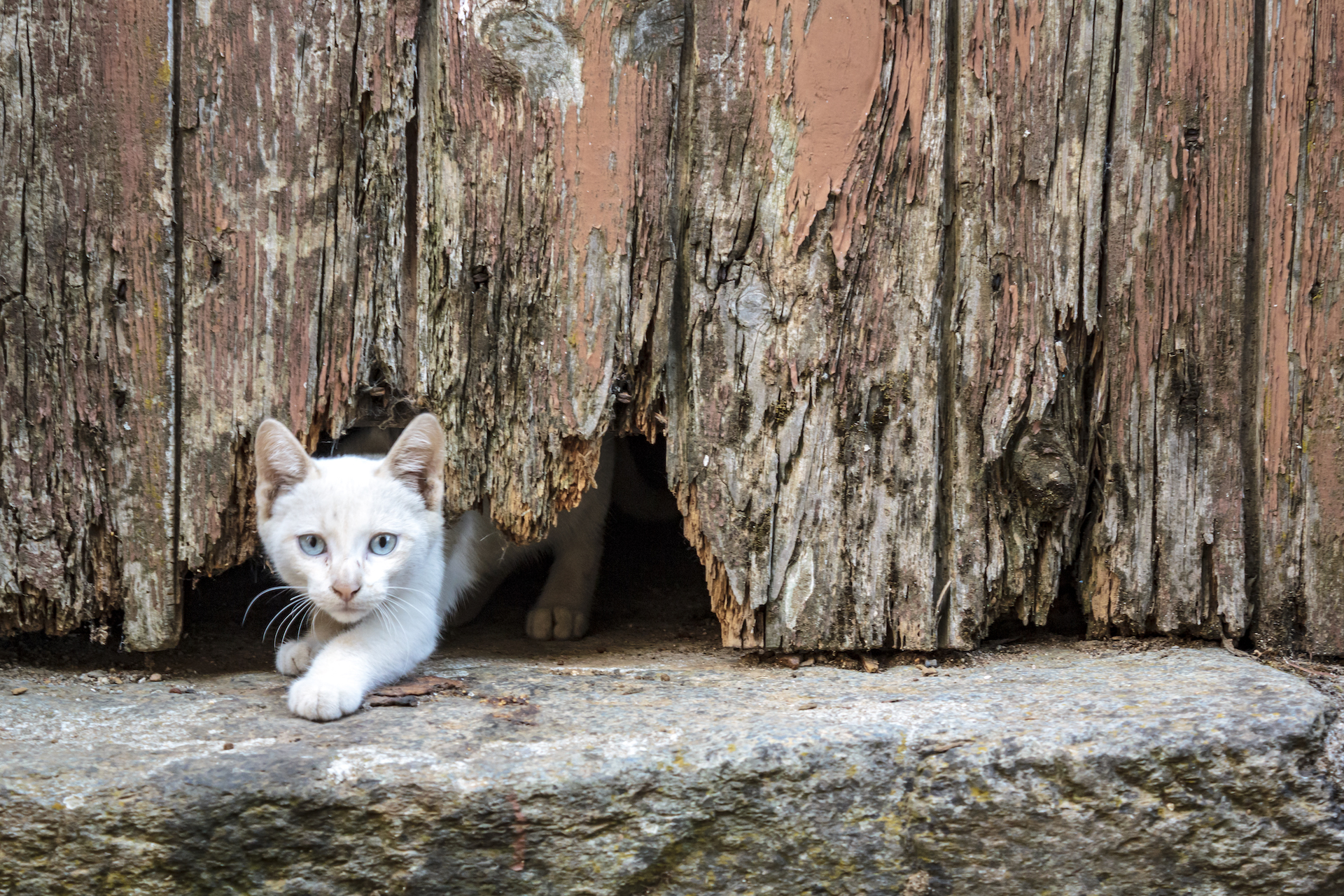How do cats squeeze through small spaces?
Cats can squeeze through impossibly small holes, but how does their anatomy enable them to do this?

Cats are so flexible that a 2014 study half-jokingly investigated whether felines are liquids. But joking aside, traditional fluid mechanics can't explain kitties' impressive contortions when squeezing through small holes. So how do cats pull off these feats?
The key to cats' ability to apparently "flow" like fluids through tiny gaps is their unique shoulder girdle. In humans, the shoulder girdle is composed of the shoulder blades, or scapulas; and the collarbones, or clavicles, according to the National Center for Biotechnology Information (NCBI).
The shoulder blades and the collarbones are connected together in humans. The resulting shoulder girdle provides rigid support for the muscles of the arms, the NCBI noted.
Related: Is it safe for cats to drink milk?
In contrast, the shoulder blades of cats are attached to the rest of the body only by muscles and not bone, according to the Catonsville Cat Clinic in Maryland. The same holds true for cats' collarbones, Nathalie Dowgray, head of the International Society of Feline Medicine in the United Kingdom, told Live Science. Moreover, feline collarbones are much smaller in comparison with the rest of the cat's body than human collarbones are to the rest of our bodies, Dowgray said.
These anatomical features help cats squeeze through tight openings. "Being able to fit into small spaces is an evolutionary advantage when hunting small prey such as mice, but also for hiding and escape from potential predators," Dowgray said.
In addition, cats' whiskers also help them squeeze through spaces. Whiskers are hairs that are twice as thick as cats' "guard hairs" (the longer, coarser hairs in cats' fur) and sit three times as deep within the skin, Dowgray said.
Get the world’s most fascinating discoveries delivered straight to your inbox.
"The base of each whisker is packed with nerve endings, providing cats with a highly sensitive navigational system that conveys a large amount of information about their surroundings," Dowgray said. "This includes judging the size of small spaces before attempting to squeeze through."
Does their impressive flexibility mean cats are essentially liquids? Marc-Antoine Fardin, a physicist at Paris Diderot University, investigated that question in a 2014 study, for which he won an Ig Nobel Prize — a parody of the Nobel Prize that honors research that "makes people laugh, then think."
A 2024 study also joked that cats are "(almost) liquid," and that they rely on their body size awareness while approaching and going through small holes. The research, published in the journal iScience, tested whether cats would go through increasingly narrow and, separately, increasingly short holes. They found that cats strode right through tall and narrow openings, even holes that were narrower than the width of the cat's chest, "but they slowed down before reaching, and while passing through the shortest ones."
The team reasoned that cats approach narrow and short holes differently, which "indicates a reliance on body size representation in the cat."
Why do cats like to squeeze into tiny spaces? "Cats commonly choose to hide in small spaces, like under the bed, when they feel stressed or frightened, as this helps them feel more safe and secure," Dowgray said. "Cats will also choose small spaces for privacy when they need some time out from their surrounding environment. Avoid disturbing cats in small spaces, unless you are concerned that they may be injured or unwell."
Editor's note: This article was originally published on Oct. 29, 2022 and was updated on Sept. 18, 2024 to include information about the new iScience research.




